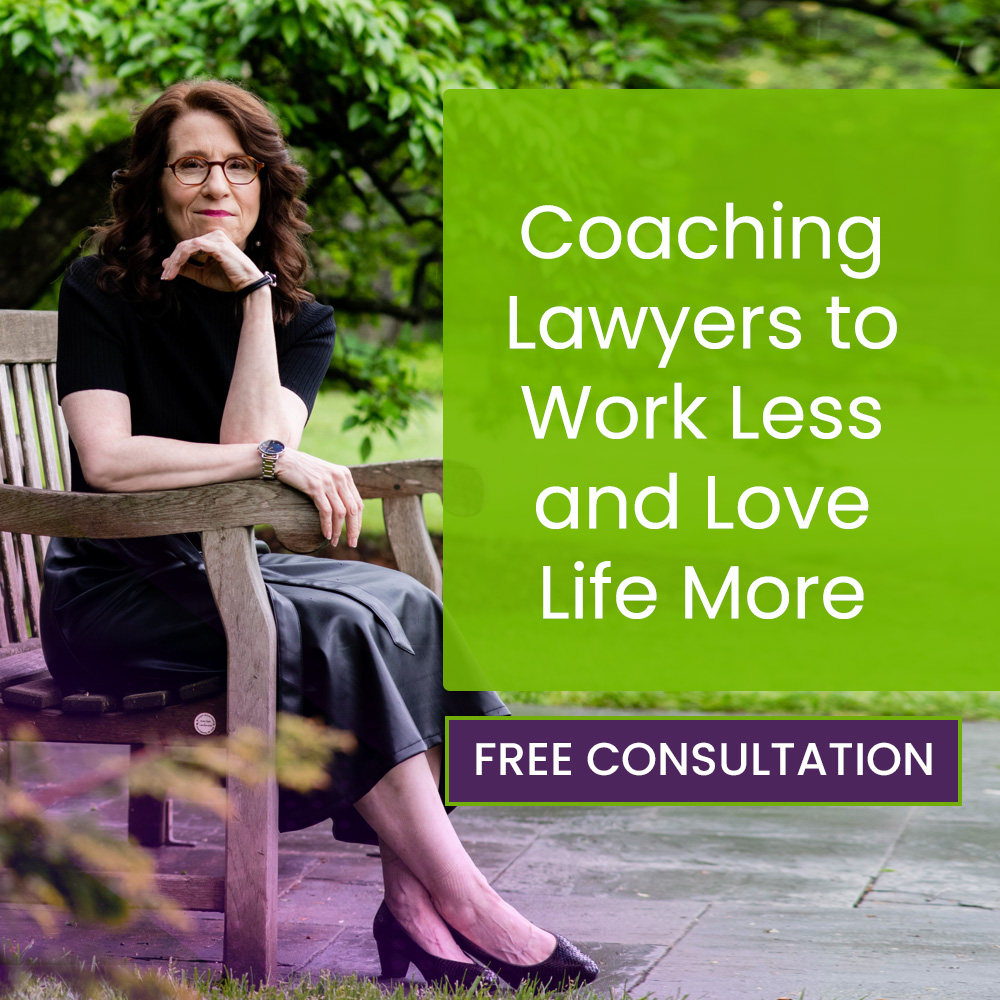Brenda was 57 years old when she was suddenly laid off from a major Philadelphia law firm in 2011 after 20 years. This is the story of how she learned the new terrain of seeking employment, repackaged herself and how you can too.
The first thing Brenda did was spend “a month on the couch.” She was shocked, devastated and describes it as “losing a chunk of identity.” She doubted her worth as a professional.
This was not wasted time, but a necessary recharging period that pays off when you get ready to go for it. It may be important to give yourself permission to rest, think, discern and gear up.
Brenda hired me to coach her through transition. About coaching, Brenda says this: “Having a coach was important for a variety of reasons. First of all, it helped me get organized, set goals when life was so overwhelming, and break them down into short-term and long-term manageable goals. I had homework, which made me accountable, as I would have been at work. Without making promises like, ‘Everything will be OK,’ my coach helped me focus on the positive aspects of what I was doing rather than the negative. … As much as friends would try to be helpful, some of them had never been without a job and don’t know the feelings associated with it. They didn’t know what to ask.”
Coaching questions did help: “What can you do so there will be another interview? What can you do to improve your chances? This took it out of the world of fate and put it into something I could do something about. When you feel powerless, you think you just wait it out, but there is always something you can do.”
The first step was contacting a person who led workshops in career transition. She was, as it turned out, also unemployed at the time. “Being able to connect with someone else who was going through the same thing was so important, gave so much strength. I didn’t know anyone else who was unemployed. Everyone had a job. And, she was so positive that it gave me hope. It had a major impact on my assessment of the situation. She had been laid off and was very competent and accomplished so I took comfort in the idea that successful people also lose their jobs. This was a seismic shift in perspective. There are things I can do.”
Brenda learned just how much things had changed in 20 years, when newspaper listings, cover letters and a resume were the cornerstones of a job search.
When you are ready for a career shift, these are steps that will help:
- Get business cards. You need a way to quickly provide your contact information at any time or place.
- Make a list of everyone you know to build a network.
- Compile accomplishment stories (narratives that describe a problem you were asked to solve, what you did to solve it and the results of your efforts).
- Consider a professional resume writer. Brenda needed support in this area. When it was done, she didn’t recognize herself. “Everything was true, but I felt like someone had put makeup on me—is that me?”
- Create a LinkedIn profile and post your resume.
- Craft an elevator speech—in 30 seconds say in a positive, upbeat way who you are and what you do.
- Join support groups. Brenda went to support workshops targeted to people 50 and above. It was scary to her that such groups even existed. Some ideas from these workshops: Don’t talk about when you graduated from college or your years of experience. Don’t enable someone to calculate your age in a conversation. Instead, focus on your interests, strengths and accomplishments.
- Learn how to network. Brenda’s first big shock was that she even had to network. “What is it? Who do you do it with? What do you say? What are you supposed to get out of it?”
- Take courses. Brenda attended workshops on the etiquette and logistics of networking. She learned how to make it easy for the people she met by having a canned introduction that she gave in a spontaneous-seeming way.
- Join professional networking groups. They are educational, supportive and kept Brenda going. “Networking shouldn’t be about how you can help me. It’s about, ‘How can I help you?’ That can seem challenging for someone unemployed, feeling helpless. But the person you talk to might have a business need and you can be instrumental in making a connection. Being of service can help with the helplessness.”
- Identify where you want to work and why. Meet people who can make introductions so that someone in a hiring position will think of you when there’s an opening. That is the hidden job market. This is why many jobs are never advertised. The manager already has a candidate.
- Register on job boards and post your resume. Some say this is not productive, but Brenda found that it infused optimism. “It gave me a sense of control, raised hopes when a job appeared that seemed like a good match. Maybe the odds are against me, maybe they have to post if for legal reasons, but I’m going to go for it anyway. Someone is going to get that job.”
- Stay current. Brenda was a member of three professional associations and continued to attend meetings, webinars and read professional journals. You may be asked at interviews what you are doing to keep your skills sharp.
- Form a life that substitutes for work where you won’t be isolated, can share opinions, ideas, and have a reason to put on some decent clothes and get out and be somewhere on time.
- These are the things one loses when a job goes away. Brenda said, “We have to have something to take the place of work. There has to be something meaningful going on.”
- Have a schedule of places to be and tasks to accomplish, just as you would at work.
- Volunteer. It can lead to a new job or the inner reward of doing it.
- When unemployed, spend at least 40 hours a week looking for work. That’s your job.
- Even after you make your transition, stay involved in networking groups, paying it forward, and serving as hope, inspiration and a resource for people who are still looking.
- Find a creative outlet. For Brenda, it was mosaics class, which became a rock of support.
- Get spiritual. Brenda joined a synagogue shortly after she was laid off, searching for “something bigger than and totally outside of my life filled with unemployment.” It was another source of connections, anchor in her life and “truly became the silver lining that I never could have anticipated.”
Although she was advised to network 90 percent of the time, this was not a comfortable fit for Brenda, so she created a hybrid composed of visiting posting boards, reviewing job alerts, networking and staying connected to professional associations. Most interviews came from recruiters who saw her resume online and she got her next job that way.
Brenda recently made another transition at age 60. She has given a lot of thought to what she does best, likes to do, and jumped into the hunt. Determined not to settle, she turned down two jobs before she was offered her current position. Brenda attributes her new-found confidence in the process to the guidance she received, workshops, and her natural spunk, humor and energy. She is now comfortable with transition in a way she was not three years ago and her new philosophy is that being laid off can lead to something amazing.
Reprinted with permission from the September 11, 2014 edition of “The Legal Intelligencer” © 2014 ALM Media Properties, LLC. All rights reserved. Further duplication without permission is prohibited. For information, contact 877-257-3382, reprints@alm.com or visit www.almreprints.com.







